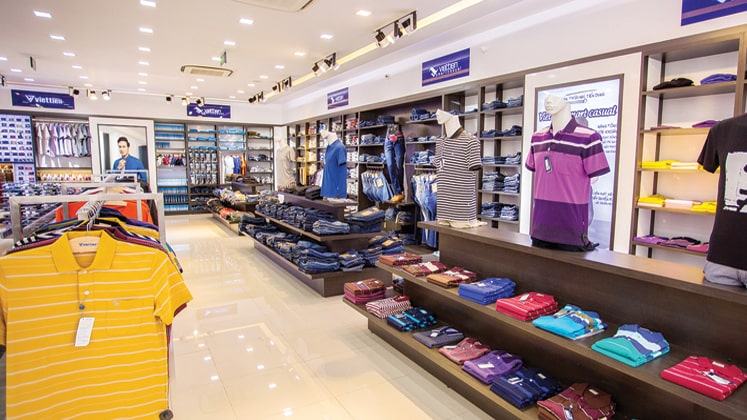
Yes, they need to! If they have to avoid what many global fashion brands had to go through lately.
Over the last few years, technology has not only changed the way we live but also the way we shop. E-commerce, or buying and selling products online, has completely changed the definition of shopping today. The figures say it all! According to Statista, e-commerce was responsible for US $ 2.3 trillion in sales in 2017, with the numbers expected to touch US $ 4.5 trillion in 2021. Notably, apparel and fashion products are among the top categories when it comes to buying and selling online.
This phenomenal increase of fashion e-commerce is leaving a far-reaching impact on the bricks-and-mortar stores. At the start of the year, when a top brand like Gap announced the closure of over 200 stores, it sent shock waves in apparel and fashion industry. Similarly the Arcadia Group, which owns Topshop and Topman, recently filed for bankruptcy protection in the US. And that’s not all! There are many fashion brands that have experienced a sharp drop in sales. Even fashion giant Forever 21, very recently, filed for bankruptcy under Chapter 11 of the US Bankruptcy Law as customers are gradually changing their habits to online shopping. To put it simply, e-commerce is slowly killing retail market and all the big and small apparel and fashion firms are devising strategies to survive.
But is Vietnam, which has been one of the fastest growing apparel hubs in the world, ready to combat this threat? For some reason, fashion e-commerce in Vietnam has never been big and the principal reason for this has been lack of easy and popular online payment method in the country. Also, Vietnam is one place where people still prefer to try on clothes before spending money to purchase them. This fragile condition of e-commerce in Vietnam does not sound good for the health of country’s apparel and textile sector.
The Vietnam Textile and Apparel Association, better known as VITAS, in one of its reports said that country’s apparel and textile expenses account for 5 to 6 per cent of total spending – That’s around US $ 4 billion and so is a quite big market for Vietnam.
Over the years, several local fashion brands have flourished in the country, including the likes of Forever Young, Paul Downer, DGC, S.PEARL and HeraDG – all owned by Duc Giang Corporation. Importantly, Duc Giang Corporation also develops more chains, likeSmartsuits Tailor Shop. Similarly, textile firms like Nha Be Garment Company, Viet Tien and May 10 are also constantly investing in improving designs and expanding product distribution stores to increase market share and improve efficiency.

Elaborating further, Than Duc Viet, General Director, May 10 Corporation said, “To serve the needs of domestic consumers, our company offers fashionable products with different styles and abundant types of materials and designs following the trend of Vietnamese and international fashion. In fact, a recent survey conducted by Asia Plus interestingly highlights that NEM, Ninomaxx, Blue Exchange and Canifa are among the top 10 favoured brands in Vietnam today whereas global fashion powerhouses like Zara and H&M rank 2nd and 8th, respectively. More on this, Rahul Verma, Director of Quality Assurance, L Brands said, “I think e-commerce is booming in Vietnam, and apart from local platforms there are bigger players like Lazada, Tiki and Shopee too. Most of the local platforms are doing quite good and people find easy to buy online.”
According to industry experts, the export and marketing network is still one of the major drawbacks in Vietnam’s textile and apparel supply chain and that’s a big worry. In particular, to avoid going bankrupt like several international brands, Vietnam’s garment and textile enterprises must focus their attention on e-commerce. In fact, among the very few local fashion e-commerce sites in Vietnam are www.chon.vn and www.zalora.vn.
According to a survey, most of the enterprises in the textile and garment industry have not been paying adequate attention to building e-commerce websites and selling goods online. In particular, many business establishments have initially started selling goods or providing services online; however, transactions still remain slow. Moreover, many times information is incomplete or updated at a sluggish pace and images are not eye-catching. The focus is majorly on introducing products and businesses, consequently resulting in very low number of customers.
In this regard, Than Duc Viet said, “Our e-commerce website has been in operation for 2 years and has also grown. However, building e-commerce has never been easy, especially when the company itself builds the system.” To overcome this drawback, May 10 also built a product information page on social networks, cooperating with professional domestic and international e-commerce sites, such as Amazon. However, he also added that the commercial page is too large, there are many suppliers, and so competition will be fiercer.
Similarly Tran Hai Yen, Director, Bnew Garment Co. Ltd., said that enterprises do not have enough manpower and financial resources to develop. Moreover, small and medium-sized textile and apparel enterprises mainly outsource for large enterprises, so they have to accept all the challenges. Long Vu, Regional Sales Manager, Intelligent Solution for Apparel Textiles said, “All local Vietnam garment companies have very limited people who know e-commerce, IT, system and also marketing strategy. Also local brands haven’t yet focused on e-commerce.”
There’s one way ahead now!
The business firms have to make complete use of the best of the technology available as well as keep pace with the new business strategies as that is the only way to avoid a slump that some of the renowned fashion brands have been witnessing in recent times.







